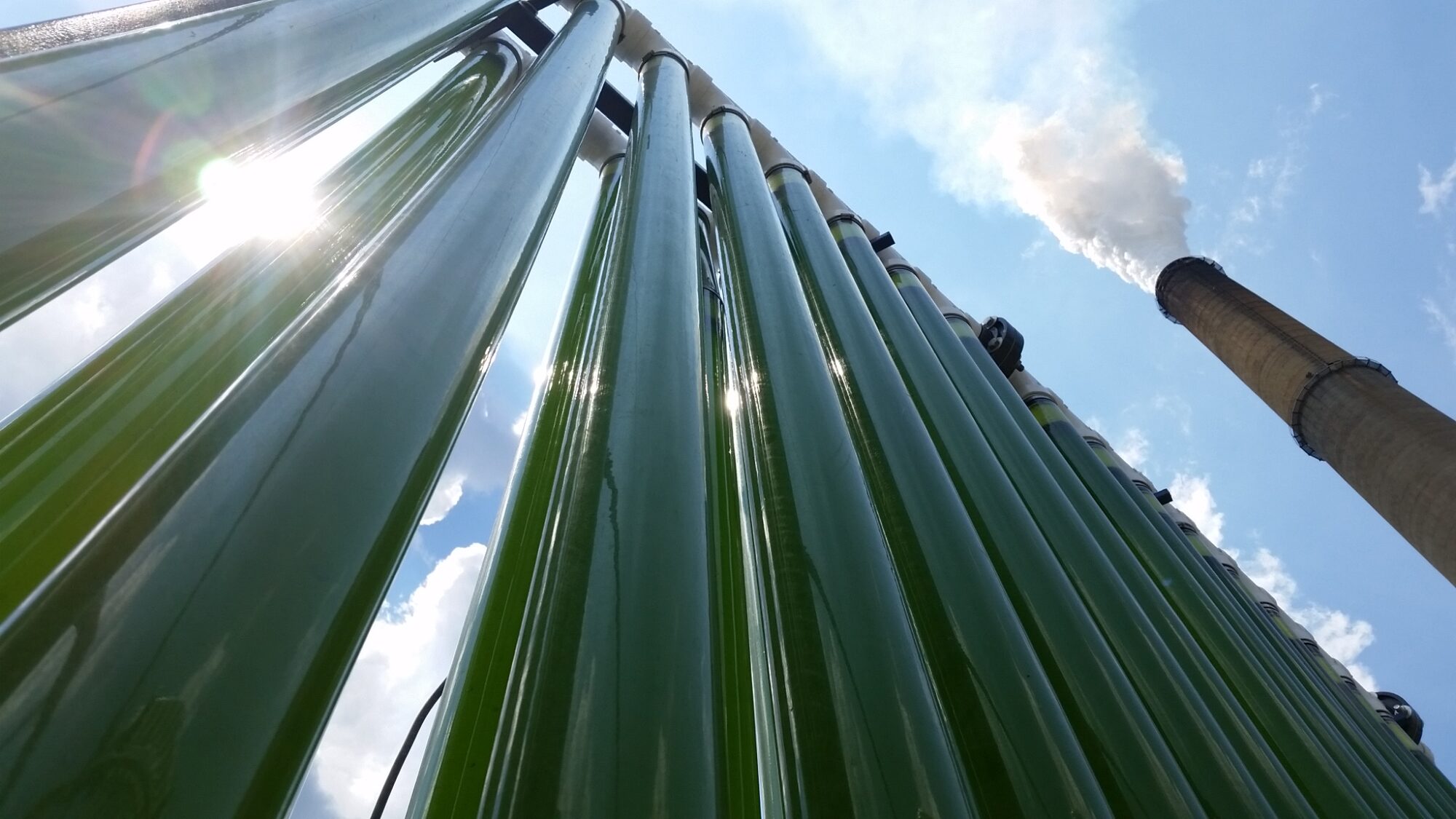Many scientists believe that if we are to get a handle on the climate change crisis, we will need to capture, utilize, and sequester carbon dioxide directly from the atmosphere or industrial sources. With millions of years of evolution on their side, algae could be one of the most promising carbon capture and mitigation solutions.
Commercial algae cultivation has the potential to remove vast amounts of carbon dioxide from the atmosphere, or directly from industrial facilities. Growing one ton of algae can capture nearly two tons of carbon dioxide, while using this biomass to make products or biofuels can also help reduce greenhouse gas emissions. The carbon impact of algae-based biofuels, for example, can be up to 70% better than fossil fuels.
The use of algae in agriculture may have even larger impacts. Soil amendments, biostimulants and biofertilizers made from algae can boost agricultural productivity and nutrient utilization. Using these products can increase the organic carbon content of soil, increasing the increase carbon storage potential of agriculture. One ton of carbon dioxide used to make algae-based soil amendments can yield 10-15 tons of carbon stored in soil.
Perhaps the most unique advantage of using algae in carbon capture strategies is economic. In almost every case of algae cultivation, there are opportunities to make products from the resulting biomass that have significant market value. This can offset the cost of carbon capture and make the adoption of the technology easier as carbon regulations and incentives for carbon capture and use/trading come into place around the world.
Some of the companies working in the algae and carbon capture space include:
Important research and technology development is underway at:
- Arizona Center for Algae Technology and Innovation
- Pacific Northwest National Laboratory
- Montana State University
- National Renewable Energy Laboratory
- Los Alamos National Laboratory, and many others
Ready to learn more about algae and carbon capture? ABO’s members are working to advance the technology, the markets and the policy that can make algae part of the solution to the global climate crisis. Contact ABO today.

